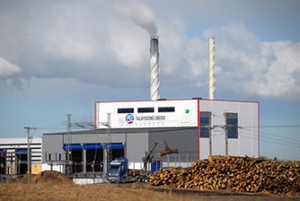Twinwoods Heat & Power CHP

Summary
A Biomass Waste EFW facility based on 40,000 tonnes per annum of Wood Waste generating 3.4MWe to the grid[1]. The permitted capacity of the plant is 32,500 tonnes per annum and the permit was extended in 2018 to enable it to receive hazardous Wood waste.
The Twinwoods site was developed by Twinwoods Heat and Power Ltd (a company established to develop the project on from the original developer B&W Waste Management) and was originally a joint venture between Bioflame and Growing Beds. After raising capital from Star Capital is was completed in 2015 after originally starting in 2009[2]. It is located in Twinwoods Industrial Park in Bedfordshire.
Plant
The project was originally based on equipment supply and delivery by Bioflame, but after going into administration in 2011 it was taken up by Saxlund International who changed the arrangements, using their combustion grate technology[3] similar to the Falbygden Biomass plant in Sweden. The plant is WID complaint.
Local Authority Users
The following data comes from WasteDataFlow for the financial year 2018/19 and represents those local authorities recorded as putting tonnage into the site (either directly or via a transfer station). The tonnage received cannot be directly compared with the stated historical tonnage received and recorded in the EA statistics as these are recorded on a calendar year basis (i.e. January 2018 to December 2018). A 'zero return' below indicates no local authority tonnage was recorded, most likely a result of the plant being recently commissioned and actually having received no tonnage. Equally, lower than expected tonnage maybe a result of either a new plant being in 'ramp up' towards full capacity after construction, or may be a result of plant shut down and subsequent re-start in a year.
data link to be added
